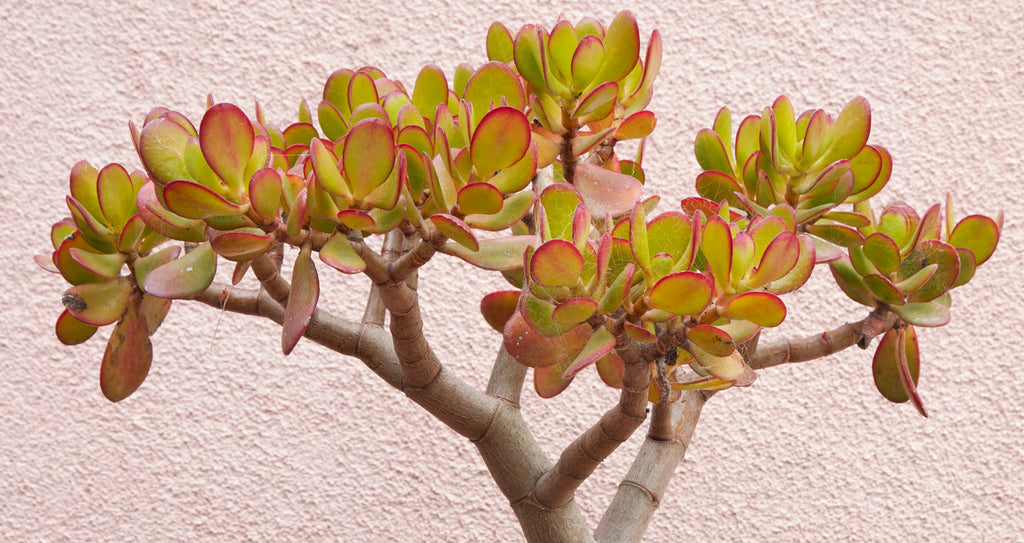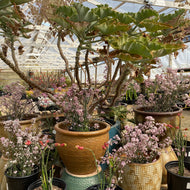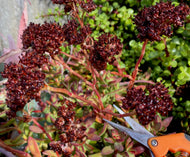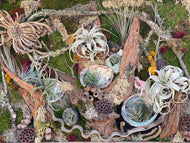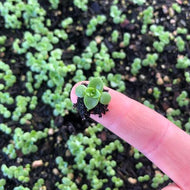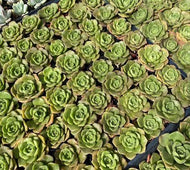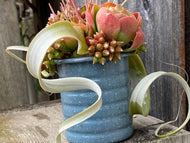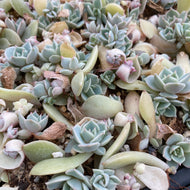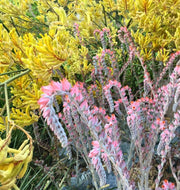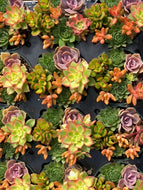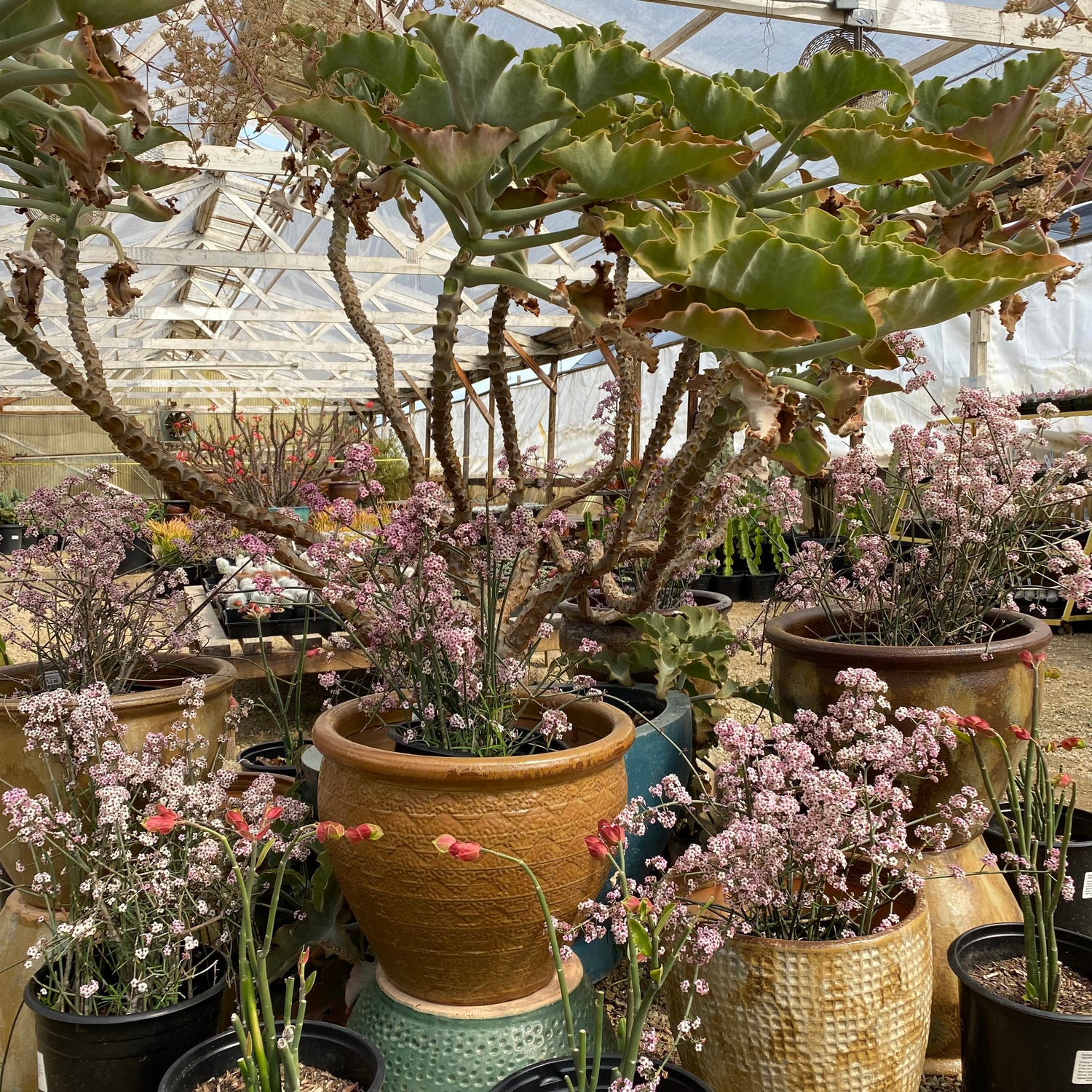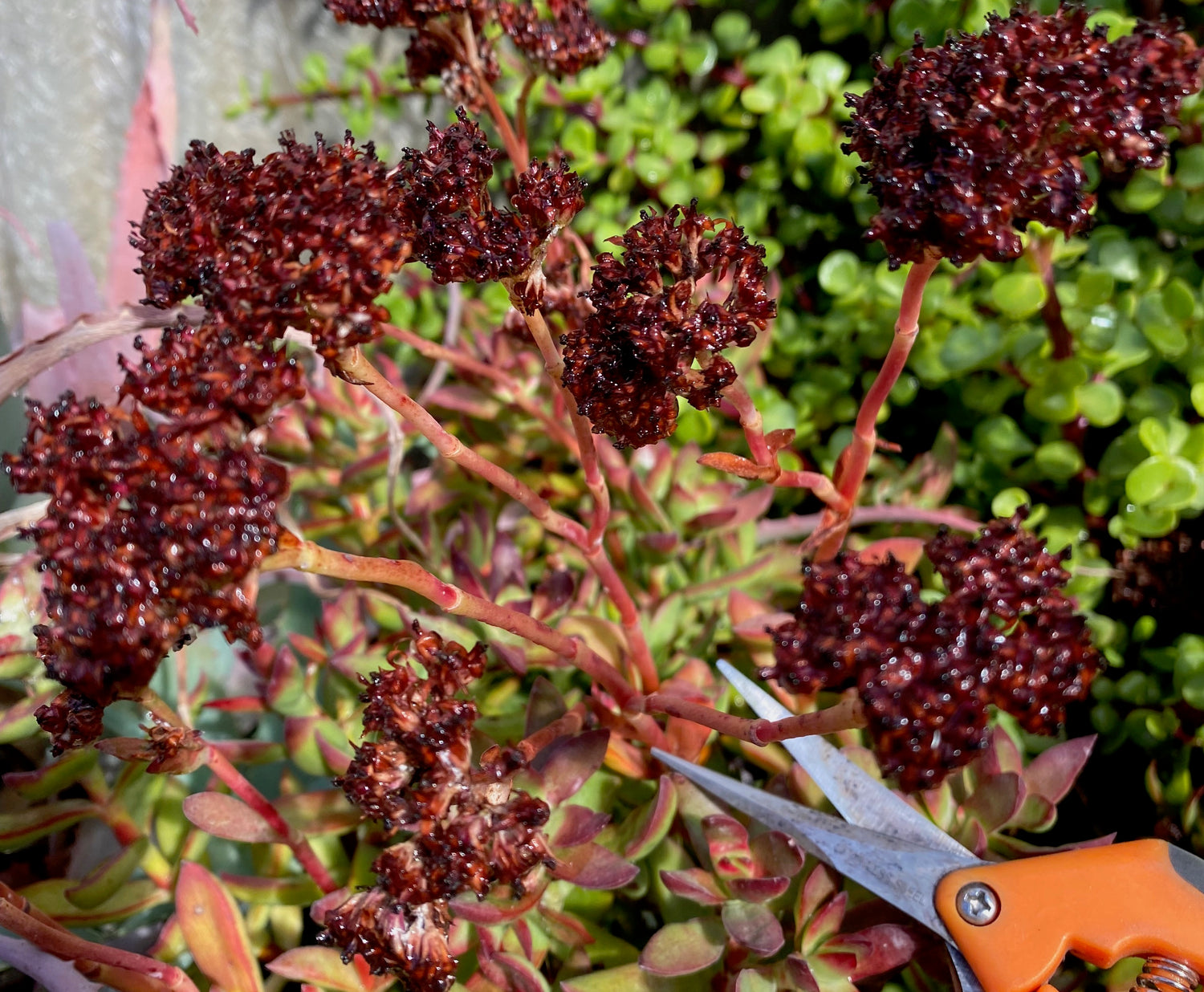The genus Crassula is comprised of hundreds of species and garden cultivars. Most varieties that we see circulating around nurseries are endemic to the Eastern Cape of South Africa. They range from diminutive dwarf plants that barely surpass an inch in height like Crassula susannae, to larger shrubs, like the familiar jade plant, Crassula ovata.
Flowers
Crassula plants produce flowers that range from white to pink to red. Some inflorescences are not overly remarkable or barely noticeable, like the watch-chain crassula, Crassula muscosa. Others, like Crassula coccinea and Crassula falcata produce beautiful flower clusters of red and pink, respectively. Bloom timelines are highly variable. Some, like the beautiful hybrid, 'Morgan's Beauty', bloom in spring. Others, like the classic jade plant, produce their flowers in the winter, while still others bloom in summer and fall.
Care
Crassulas are generally easy to care for given they are planted in the right climate and exposure. Full sun in coastal areas allow for a beautiful reddening of the plant's leaf margins. In hotter, inland areas, a bit of afternoon shade will keep them from desiccating in the heat. Most are tolerant of temperatures down to about 30 degrees fahrenheit. Damage can occur when temps dip below freezing, especially for prolonged amounts of time. The most pernicious pest found on crassula are mealybugs. Small infestation can be controlled with diluted rubbing alcohol. If an infestation becomes large, it is usually best to discard the plant.
Crassula radicans ssp. pubescens
Crassula 'Springtime'
Crassula 'Campfire'
